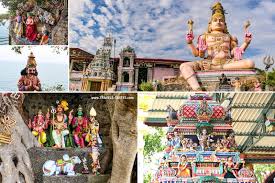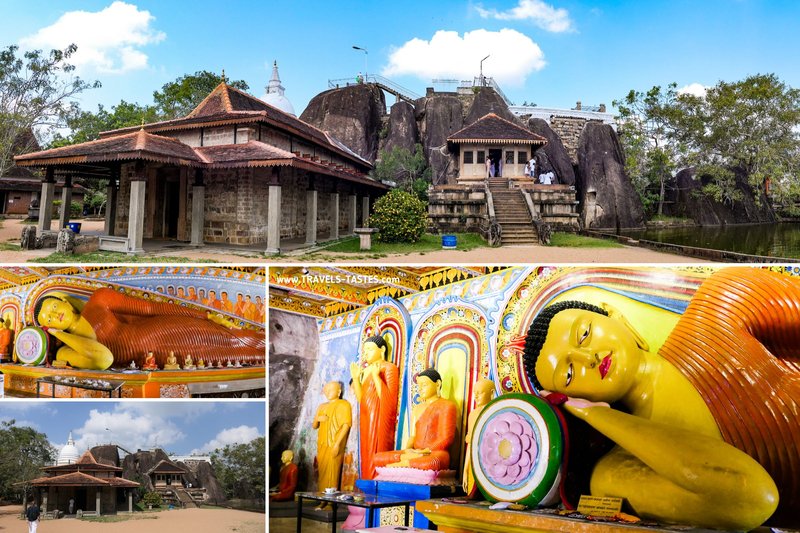
(By Lokanath Mishra)
On 18.12.24 , I reached in Colombo. Colombo, the commercial capital of Sri Lanka, is a city that seamlessly blends tradition with modernity. As I stepped into this vibrant city, I was struck by its infectious energy and warm hospitality. Here I have come to know whether Ravan was a king of Sri Lanka and whether story of Ramayana is real or not?
Here I have come to know about
Ravana’s haircut, also known as “Ravana’s vetting” or “Ravana’s haircutting,” refers to a traditional Sri Lankan ritual where devotees shave their heads as an act of devotion to Lord Ravana.
According to legend, Ravana, the king of Lanka, was a devout follower of Lord Shiva. As a symbol of his devotion, Ravana would often shave his head and offer his hair to Lord Shiva.
In modern times, devotees in Sri Lanka, particularly those from the Tamil and Sinhalese communities, participate in this ritual as a way to demonstrate their devotion to Lord Ravana and Lord Shiva. The ritual is often performed during special occasions such as the Ravana festival, which is celebrated in Sri Lanka.
The process of Ravana’s haircutting typically involves:
1. Preparation: Devotees prepare themselves for the ritual by fasting, praying, and performing other acts of devotion.
2. Shaving: The devotee’s head is shaved, often by a priest or a designated person.
3. Offering: The shaved hair is then offered to Lord Ravana or Lord Shiva as a symbol of devotion.
Ravana’s haircutting is a unique and fascinating aspect of Sri Lankan culture and tradition, highlighting the island nation’s rich spiritual heritage.
The historicity of Ravana as a king of Sri Lanka is a topic of ongoing debate among historians, archaeologists, and scholars. While there are various accounts and legends about Ravana’s reign, here are some of the key evidence and sources that suggest Ravana may have been a king of Sri Lanka:
# Archaeological Evidence
1. Sigiriya Rock Fortress: This ancient rock fortress in central Sri Lanka is believed by some to be the remnants of Ravana’s palace.
2. Ravana Ella Cave: Located near Ella, Sri Lanka, this cave is said to be one of the places where Ravana hid during the Ramayana.
3. Ravana’s Airport: An ancient airport believed to be Ravana’s is said to be located in the Mahiyanganaya area of Sri Lanka.
# Literary and Historical Sources
1. The Ramayana: This ancient Hindu epic, attributed to the sage Valmiki, tells the story of Ravana’s reign and his conflict with Rama.
2. The Mahavamsa: This ancient Sri Lankan chronicle, written in the 5th century CE, mentions Ravana as a king of Lanka.
3. The Dipavamsa: Another ancient Sri Lankan chronicle, written in the 4th century CE, also mentions Ravana as a king of Lanka.
# Inscriptions and Coins
1. Ravana’s Inscription: An ancient inscription found in the Sigiriya rock fortress is believed by some to be an inscription left by Ravana himself.
2. Ravana’s Coins: Some ancient coins found in Sri Lanka are believed to have been minted during Ravana’s reign.
# Geographical and Topographical Evidence
1. Lanka: The name “Lanka” is still used to refer to Sri Lanka, which is believed to be the same island mentioned in the Ramayana as Ravana’s kingdom.
2. Ravana’s Falls: A waterfall in the Ella area of Sri Lanka is said to be the place where Ravana’s wife, Mandodari, used to bathe.
While these sources provide some evidence for Ravana’s existence and reign in Sri Lanka, it is essential to note that the historicity of Ravana is still a topic of debate among scholars. Some consider Ravana to be a mythical or legendary figure, while others believe that he may have been a historical king who ruled over Sri Lanka.
From Colombo, I have come to Anuradhapura and thereafter Trincomalee in Sri Lanka. As I embarked on my journey to Sri Lanka, I was filled with excitement and anticipation. My destination was the ancient cities of Anuradhapura and Trincomalee, steeped in history and rich in cultural heritage. Little did I know that this trip would be a transformative experience, leaving an indelible mark on my heart and mind.
Anuradhapura is located in the bank of Sri Ram lake , the ancient capital of Sri Lanka, was my first stop. As I wandered through the ruins, I was struck by the sheer scale and grandeur of the city. The majestic Dagabas, the sacred Bodhi Tree, and the intricate carvings on the stone pillars all whispered tales of a bygone era. I felt as though I had stepped into a time capsule, where the past and present blended seamlessly.
One of the most poignant moments of my visit was at the Sri Maha Bodhi Tree, said to be a sapling of the original tree under which Buddha attained enlightenment. As I stood before this sacred tree, I felt a deep sense of peace and tranquility wash over me. The gentle rustling of the leaves and the soft chirping of birds created a sense of serenity, transporting me to a realm beyond the mundane.
From Anuradhapura, I traveled to Trincomalee, a city nestled on the northeastern coast of Sri Lanka. The moment I arrived, I was captivated by the natural beauty of the city. The sparkling blue waters of the Indian Ocean, the picturesque harbor, and the majestic Koneswaram Temple all combined to create a breathtakingly beautiful landscape.
As I explored the city, I was struck by the rich cultural heritage of Trincomalee. The city’s history dates back to the ancient times, with influences from various cultures, including the Portuguese, Dutch, and British. The Koneswaram Temple, with its stunning architecture and intricate carvings, was a testament to the city’s rich cultural legacy.
As I stood on the shores of Trincomalee, watching the sunset over the ocean, I felt a deep sense of connection to this land and its people. The warmth and hospitality of the Sri Lankan people, the rich cultural heritage, and the breathtaking natural beauty all combined to create an unforgettable experience.
In conclusion, my visit to Anuradhapura and Trincomalee was a journey of discovery, not just of the ancient cities and their rich cultural heritage but also of myself. As I reflect on my experiences, I am reminded of the profound impact that travel can have on our lives. It broadens our perspectives, challenges our assumptions, and connects us to the world around us in ways that we never thought possible.
Ravan Vettu, also known as Ravana’s Cleft, is a significant feature within the Koneswaram Temple complex in Trincomalee, Sri Lanka. According to legend, this cleft was formed when King Ravana attempted to remove the temple and drop it into the sea, but Lord Shiva made him drop his sword instead, creating the cleft in the rock ¹.
The Koneswaram Temple, also known as the Temple of the Thousand Pillars, is a classical-medieval Hindu temple complex that has been an important pilgrimage site for centuries. The temple’s history dates back to the ancient period, with its exact date of establishment still a topic of debate among historians ¹.
Ravan Vettu is just one of the many fascinating aspects of the Koneswaram Temple complex, which is steeped in history, mythology, and cultural significance. ( to be continued)

